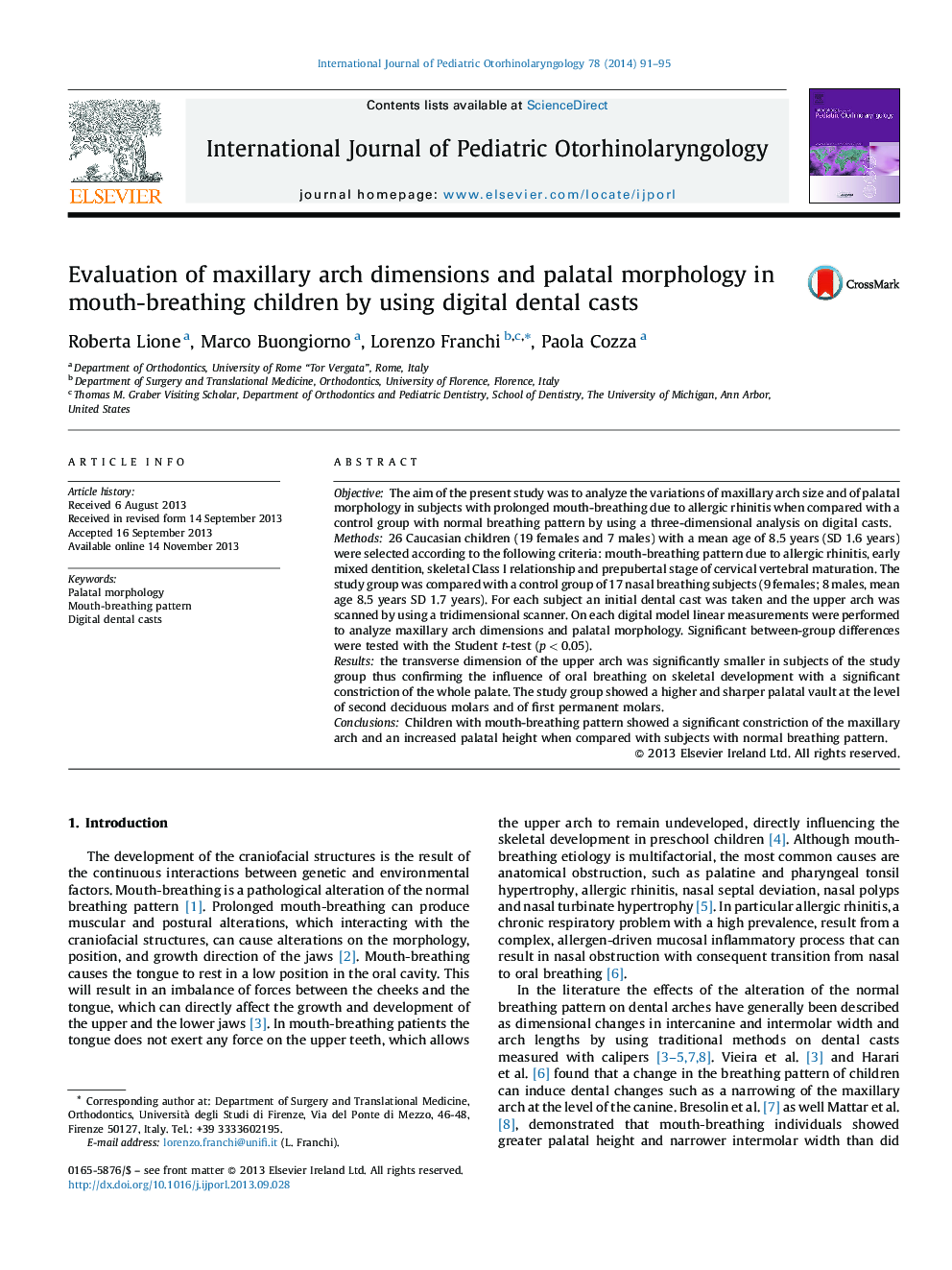| Article ID | Journal | Published Year | Pages | File Type |
|---|---|---|---|---|
| 4112284 | International Journal of Pediatric Otorhinolaryngology | 2014 | 5 Pages |
ObjectiveThe aim of the present study was to analyze the variations of maxillary arch size and of palatal morphology in subjects with prolonged mouth-breathing due to allergic rhinitis when compared with a control group with normal breathing pattern by using a three-dimensional analysis on digital casts.Methods26 Caucasian children (19 females and 7 males) with a mean age of 8.5 years (SD 1.6 years) were selected according to the following criteria: mouth-breathing pattern due to allergic rhinitis, early mixed dentition, skeletal Class I relationship and prepubertal stage of cervical vertebral maturation. The study group was compared with a control group of 17 nasal breathing subjects (9 females; 8 males, mean age 8.5 years SD 1.7 years). For each subject an initial dental cast was taken and the upper arch was scanned by using a tridimensional scanner. On each digital model linear measurements were performed to analyze maxillary arch dimensions and palatal morphology. Significant between-group differences were tested with the Student t-test (p < 0.05).Resultsthe transverse dimension of the upper arch was significantly smaller in subjects of the study group thus confirming the influence of oral breathing on skeletal development with a significant constriction of the whole palate. The study group showed a higher and sharper palatal vault at the level of second deciduous molars and of first permanent molars.ConclusionsChildren with mouth-breathing pattern showed a significant constriction of the maxillary arch and an increased palatal height when compared with subjects with normal breathing pattern.
